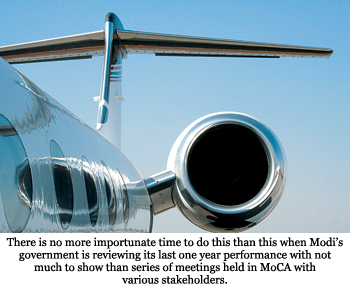INDIAN ARMED FORCES CHIEFS ON OUR RELENTLESS AND FOCUSED PUBLISHING EFFORTS

The insightful articles, inspiring narrations and analytical perspectives presented by the Editorial Team, establish an alluring connect with the reader. My compliments and best wishes to SP Guide Publications.

"Over the past 60 years, the growth of SP Guide Publications has mirrored the rising stature of Indian Navy. Its well-researched and informative magazines on Defence and Aerospace sector have served to shape an educated opinion of our military personnel, policy makers and the public alike. I wish SP's Publication team continued success, fair winds and following seas in all future endeavour!"

Since, its inception in 1964, SP Guide Publications has consistently demonstrated commitment to high-quality journalism in the aerospace and defence sectors, earning a well-deserved reputation as Asia's largest media house in this domain. I wish SP Guide Publications continued success in its pursuit of excellence.
"Make in India" Drive, Time to Shed Indifference

The NDA government just completed one year in office and the Prime Minister, Narendra Modi is reviewing progress made on all fronts, with special emphasis on ‘Make in India’ drive to realise the potential of the nation as the destination for being the most cost-effective manufacturing hub of the world. The sector still to get its due attention is the general aviation/business aviation (GA/BA) sector which has a huge potential to emerge as a manufacturing hub for aviation products and also as an enabler for other manufacturing industries to come up in hinterland India.
The Ministry of Civil Aviation (MoCA) policies till recently had only focused on managing the airline sector. However, the new draft National Aviation Policy lays special emphasis on remote/regional air connectivity, wherein the need to promote GA/BA sector, comprising mostly the small aircraft operators, has finally got the long-awaited attention.
Ministry’s Initiative
In April this year a high level delegation of the MoCA, led by the Civil Aviation Secretary, had gone to the the United States and visited Wichita, the hub of general and business aviation manufacturing facilities there. There is no better place in the world to know how a developed country like the United States has managed to maintain its status as an economic power of the world through focused development of its GA/BA sector.
As per ICAO Report of 2012 (ICAO Project IND/10/805) – Roadmap for GA Sector in India, US holds 70 per cent of world’s GA/BA aircraft. These include small commuter airlines and charter operators, besides the private aircraft owned by individuals. The GA/BA sector has contributed tremendously to provide sustainable and robust remote/regional air connectivity in the US, with financial aid from government for incentive destinations. It would have been easy for Indian delegation to see how GA/BA segment is facilitated in the US through flexible and proportionate regulations coupled with dedicated infrastructure. Besides ensuring inclusive economic growth by having robust remote / regional air connectivity through GA/BA segment, the flexibilities and convenience offered by Business Aviation have been key to success of most US corporations and businesses. For Indian companies to get into ‘Make in India’ drive and compete more effectively in today’s global markets, the same access to general and business aviation is an absolute must.
The Ministry is trying to achieve synergy between airlines and GA/BA segment by introducing new mechanism of codesharing between the two, both for meeting route dispersal guidelines (RDGs) obligations of the airlines, as well as for building domestic flying credits (DFCs) which would help new airlines find a quick route to undertake international operations. Notwithstanding some resistance being shown towards this mechanism in certain quarters, I personally believe it is a step in the right direction and needs some fine-tuning in terms of infrastructural support and institution of a national Air Connectivity Fund (ACF), which finds mention in the draft National Aviation Policy.
Big Challenges
The Ministry’s concerted efforts for robust remote / regional air connectivity in India face big challenges from the Directorate General of Civil Aviation (DGCA), the aviation regulator and government budgetary policies. The imposition of import duty on GA/BA segment severely paralysed growth of this sector, with last two years witnessing negative growth resulting in reduction of GA/BA aircraft availability in India. The indifference shown to GA/BA sector in the last union budget is indeed quite baffling. This has, perhaps, surprised many committed officials of MoCA working tirelessly for the right GA/BA policy to be in place for ensuring inclusive growth of the nation. It is sincerely hoped they would not be disheartened and continue pressing for change of perception at the level of Ministry of Finance.
Even bigger than the budgetary challenge is the regulatory regime faced by GA/BA segment in India. The DGCA has steadfastly refused to show the same flexibility and proportionality for GA/BA regulations as existing in the US. It is well appreciated that the DGCA has the sovereign right to draft its own regulations but – why it should disagree with adapting some regulations – evolved by the US Federal Aviation Authority (FAA) for GA/BA segment after years of experience – to Indian conditions to boost domestic air connectivity? This much needed change of heart is only possible if DGCA perceives itself to be more as a ‘facilitator’ than a ‘regulator’. There is no more importunate time to do this than this when Modi’s government is reviewing its last one year performance with not much to show than series of meetings held in MoCA with various stakeholders. Foreign investments in ‘Make in India’ campaign for aviation sector would take place only when the domestic aviation sector is seen to be on a fast track of growth as it started happening in 2002. A decade has already been lost, let’s not lose even a day now.
—By Group Captain R.K. Bali (Retd). He is the Secretary of BAOA and regularly interacts with ministry /regulatory authorities to get GA/BA issues addressed





